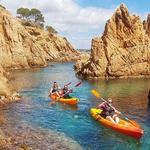Things To Do
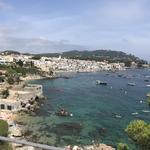
Camì de Ronda
Picture taken on Aug 10, 2020 - our first time in Palafrugell together! The coastal part of this historical trail goes from Begur to Sant Feliu de Guixols and offers breathtaking views of the Mediterranean coast. While its purpose now is recreational, it was originally created in the 19th century to help the Guardia Civil (Spain’s law enforcement) control the coastline and catch smugglers and other illegal activities.
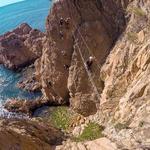
Via Ferrata Cala del Molí
The Via Ferrata Cala del Molí in Costa Brava is the only via ferrata in Europe that crosses over the sea! That means as you climb and navigate the route, you're not just scaling cliffs—you’re suspended right above the ocean, making it a unique experience with unbeatable views!
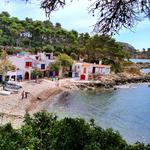
Cala s'Alguer
Cala S'Alguer has been preserved almost exactly as it was in the 16th century, making it a rare example of an untouched traditional fishing village on the Costa Brava. The colorful fishermen’s huts are still used today by locals. It has also been declared a Site of Cultural Interest by the Catalan government, protecting it from modern development and ensuring it remains a hidden gem along the Mediterranean coast.

S'Agaró
S'Agaró is a beautiful nearby beach town that is reachable via the Camí de Ronda. It was one of the first planned resort towns in Spain, developed in the 1920s by the architect Rafael Masó and has since then become a favorite filming location for various Hollywood movies.
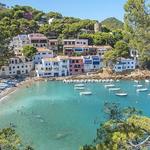
Begur
Beautiful nearby beach town and is also reachable via the Camí de Ronda. A fun fact is its unique connection to Cuba. In the 19th century, many locals from Begur emigrated to Cuba in search of fortune and, upon returning wealthy, they built grand colonial-style mansions known as "Indianos" or "Americanos." Every September, Begur celebrates its Cuban heritage with the "Fira d'Indians," a festival featuring Cuban music, dance, food, and crafts, bringing a taste of the Caribbean to the Costa Brava.

Mercat de Palafrugell
Weekly markets in Palafrugell (Sunday, Wednesday), Palamós (Tuesday), and Begur (Wednesday).

Ullastret
Ullastret is home to the largest known Iberian settlement in Catalunya, dating back over 2,500 years. The ancient Iberian city of Ullastret was a significant cultural and political center for the Iberians, who inhabited the region before the arrival of the Romans.

Torroella de Montgrí
Home to the Montgrí Castle, an unfinished fortress that sits atop the Montgrí Massif. The castle, built in the late 13th century by Rey Jaime II de Aragón, was intended as a defensive structure in a power struggle against the Counts of Empúries. However, construction was never completed. Despite its unfinished state, Montgrí Castle offers panoramic views of the surrounding landscape, including the Empordà plain, the Medes Islands, and the Pyrenees on clear days.

Olive Oil Tasting in Peratallada
Peratallada literally means "carved stone," reflecting the town's unique construction directly from the bedrock. Peratallada is one of the best-preserved medieval villages in Catalunya, and many of its buildings, streets, and even its castle are carved directly out of the natural rock. The moat that surrounds the castle was also carved out of solid rock, adding to the town’s distinct, ancient atmosphere. A trip to Peretallada should be combined with an olive oil tasting!

